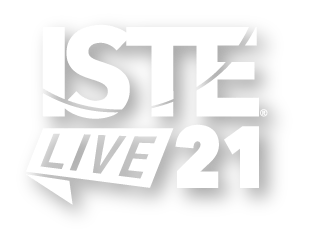

Videogames to Save the Planet: Coding Videogames With Swift in Every Subject |
Explore and create : Creation lab
Rubén Benet Santos Carlos Garcia
Learn how to create videogames using the Swift programming language and how to encourage students to program their own videogames. In the process, see how students can learn content in any subject and develop their critical-thinking and problem-solving skills.
| Audience: | Curriculum/district specialists, Teachers, Technology coordinators/facilitators |
| Skill level: | Beginner |
| Attendee devices: | Devices required |
| Attendee device specification: | Laptop: Mac Tablet: iOS |
| Participant accounts, software and other materials: | - Swift Playgrounds |
| Topic: | Maker activities & programs |
| Grade level: | PK-12 |
| Subject area: | Computer science, Language arts |
| ISTE Standards: | For Coaches: Visionary Leadership
Designer
Innovative Designer
|
Attendees will:
- Learn some of the basics of the Swift programming language.
- Learn how to create videogames taking a template as the starting point.
- Learn how to encourage students to create their own videogames while learning contents of different areas.
- Create their own videogames and lesson plans, so they understand the process
- Know how to implement coding and robotics as a cross-curricular tool so students can learn the contents of different areas.
- Discover how the Code to Learn program is helping students and teachers at the SEK International Institution and how to adapt it to other contexts.
During the presentation we will explain Code to Learn, a program through which we have implemented coding as a cross-curricular tool in our School (10 to 15 minutes). Having done so, the attendees will learn how to create their own videogames with the Swift programming language taking a template as a starting point. They will have to follow the steps we will show to them and then they will be able to personalize the videogames so they adapt to their students' needs (40 to 45 minutes). Finally, there will be a brief discussion, so they reflect on how to adapt the Code to Learn program to their institutions (5 to 10 minutes).
- Pelletier, J., Brown, M. & MacKinnon, G. (2002). Coding Electronic Discussion to Promote Critical Thinking: A Cross-Curricular Teacher Education Approach. In D. Willis, J. Price & N. Davis (Eds.), Proceedings of SITE 2002--Society for Information Technology & Teacher Education International Conference (pp. 1372-1374). Nashville, Tennessee, USA: Association for the Advancement of Computing in Education (AACE). Retrieved October 3, 2020 from https://www.learntechlib.org/primary/p/6740/.
- Humble, S. (Ed.). (2017). Creating the coding generation in primary schools: A practical guide for cross-curricular teaching. Routledge.

Diploma Program Coordinator, head of the Language Acquisition department and teacher at Colegio Internacional de Levante in Valencia | Professor at UCH CEU | Apple Distinguished Educator | Apple Teacher | Apple Certified Trainer. App Development with Swift 4 | Book Creator Ambassador | BookWidgets Ambassador | ClassDojo Ambassador | EU Code Week Leading Teacher | Explain Everything Enthusiast Kahoot! Ambassador | Minecraft Global Mentor | Seesaw Ambassador | Sphero Lead Educator TouchCast Ambassador
